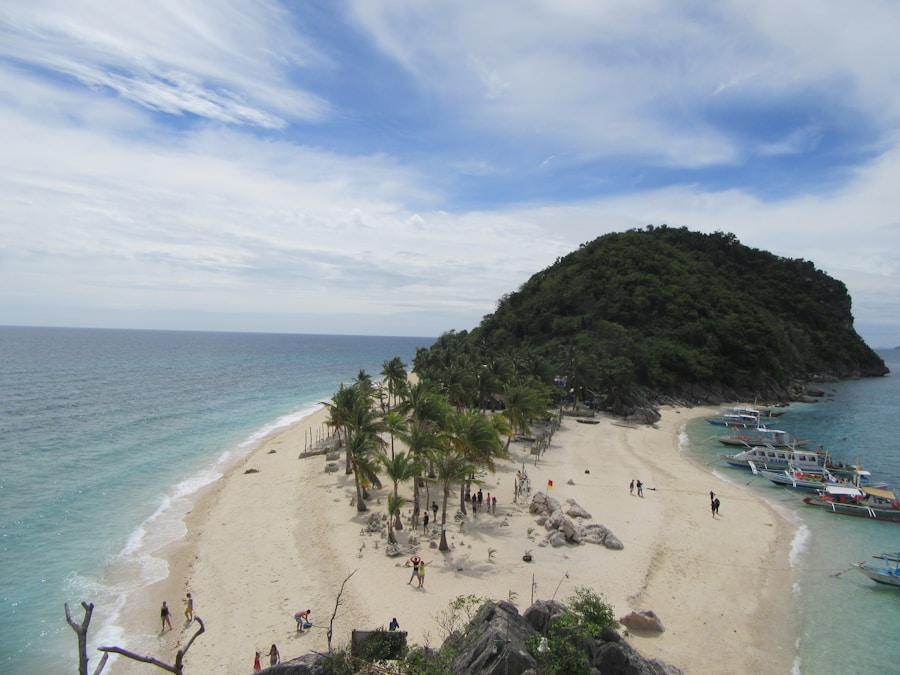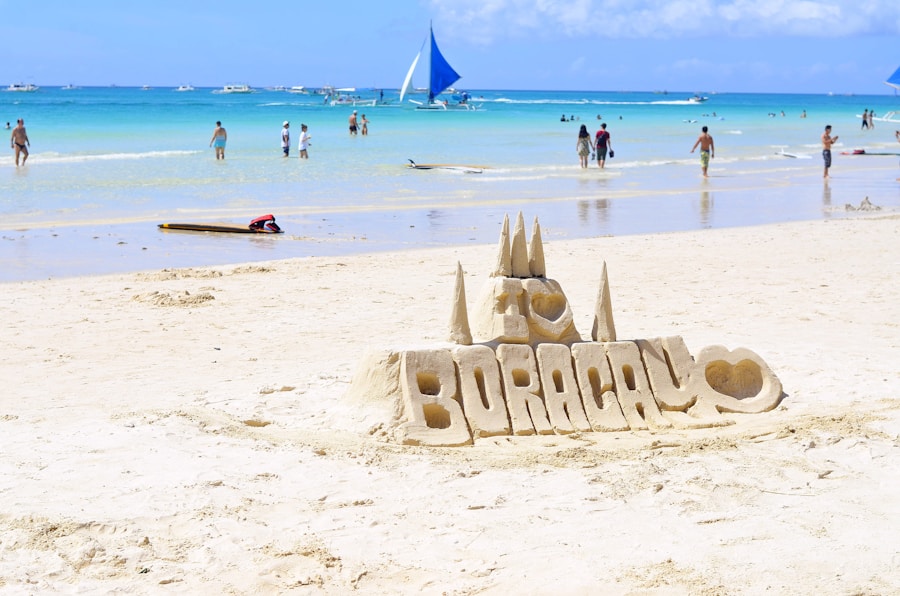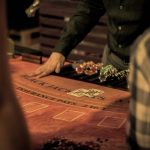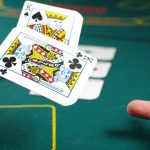Download links
How to install Paradise Found: Discovering the Beauty of Boracay APK?
1. Tap the downloaded Paradise Found: Discovering the Beauty of Boracay APK file.
2. Touch install.
3. Follow the steps on the screen.
Description
Boracay, a small island located in the central Philippines, is renowned for its breathtaking beauty and vibrant atmosphere.
The island’s allure lies not only in its stunning landscapes but also in its rich cultural tapestry and the warm hospitality of its residents.
Over the years, Boracay has evolved from a quiet getaway into a bustling hub of tourism, attracting millions of visitors annually who come to experience its unique charm. The island’s transformation began in the 1970s when it was first discovered by backpackers and adventurous travelers. Word of mouth spread quickly, and soon Boracay was on the radar of international tourists.
The island’s pristine beaches, particularly White Beach, have consistently been ranked among the best in the world. With its powdery white sand and crystal-clear waters, Boracay offers an idyllic setting for relaxation and recreation. As tourism flourished, so did the development of infrastructure, including hotels, restaurants, and recreational facilities, making Boracay accessible to a wider audience while still retaining its natural beauty.
Key Takeaways
- Boracay is a popular island destination in the Philippines known for its stunning beaches, natural wonders, and unique culture and cuisine.
- The island is home to some of the most beautiful beaches in the world, including White Beach and Puka Shell Beach, offering crystal-clear waters and powdery white sand.
- Visitors can explore Boracay’s natural wonders such as the Bat Caves, Mount Luho, and the breathtaking Ariel’s Point for cliff diving and snorkeling.
- From water activities like snorkeling, scuba diving, and parasailing to land adventures like ATV rides and ziplining, Boracay offers a wide range of activities for thrill-seekers.
- Travelers can immerse themselves in the unique culture of Boracay by trying local dishes like lechon, adobo, and fresh seafood, and participating in traditional festivals and events.
The Stunning Beaches of Boracay
Boracay is perhaps best known for its stunning beaches, each offering a unique experience that caters to different preferences. White Beach, the island’s most famous stretch of sand, is divided into several stations, each with its own character. Station 1 is known for its upscale resorts and quieter atmosphere, making it ideal for those seeking a more tranquil experience.
In contrast, Station 2 is the heart of Boracay’s nightlife, bustling with bars, restaurants, and shops that come alive after sunset. Station 3 offers a more laid-back vibe with budget accommodations and local eateries, perfect for backpackers and families. Beyond White Beach, Boracay boasts several other picturesque beaches worth exploring.
Puka Shell Beach, located on the northern tip of the island, is famous for its unique puka shells that dot the shoreline. This beach is less crowded than White Beach and provides a serene environment for sunbathing and swimming. Another hidden gem is Bulabog Beach, which is popular among water sports enthusiasts due to its strong winds and waves.
Here, visitors can engage in kiteboarding and windsurfing, making it a hub for adventure seekers looking to ride the waves.
Exploring the Island’s Natural Wonders

While Boracay’s beaches are undoubtedly its main attraction, the island is also home to a variety of natural wonders that showcase its diverse ecosystem. One such marvel is Mount Luho, the highest point on the island, which offers panoramic views of Boracay and its surrounding waters. A trek to the summit rewards visitors with breathtaking vistas that are particularly stunning at sunrise or sunset.
The lush greenery surrounding Mount Luho is teeming with native flora and fauna, providing an opportunity for nature lovers to appreciate the island’s biodiversity. Another natural wonder worth exploring is the crystal-clear waters of Crocodile Island, located just off the coast of Boracay. This small island is a popular snorkeling destination where visitors can encounter vibrant coral reefs and an array of marine life, including colorful fish and sea turtles.
Additionally, the island’s numerous lagoons and hidden coves provide secluded spots for relaxation and exploration away from the crowds.
Activities and Adventures in Boracay
| Activity | Number of Providers | Price Range | Duration |
|---|---|---|---|
| Parasailing | 10 | 30 – 60 | 15-20 minutes |
| Island Hopping | 15 | 20 – 50 | 4-6 hours |
| Scuba Diving | 8 | 50 – 100 | 2-4 hours |
| Helmet Diving | 5 | 40 – 80 | 20-30 minutes |
Boracay offers an abundance of activities that cater to all types of travelers, from thrill-seekers to those looking for leisurely pursuits. Water sports are a major draw on the island, with options ranging from parasailing to jet skiing. For those seeking an adrenaline rush, parasailing provides an exhilarating experience as you soar high above the turquoise waters while taking in breathtaking views of the coastline.
Jet skiing allows visitors to explore the open sea at their own pace, making it a popular choice for adventure enthusiasts. In addition to water sports, Boracay is also known for its vibrant nightlife scene. As the sun sets, the island transforms into a lively hub filled with bars and clubs that cater to various tastes.
From beachfront parties featuring live music to upscale lounges offering crafted cocktails, there’s something for everyone after dark. The famous “Happy Hour” deals at many establishments make it easy to enjoy a night out without breaking the bank. For those who prefer a more laid-back evening, beach bonfires and acoustic performances provide a cozy atmosphere to unwind while enjoying the sound of waves lapping against the shore.
The Unique Culture and Cuisine of Boracay
Boracay’s culture is a rich blend of indigenous traditions and influences from various cultures due to its history as a trading hub. The local Aklanon people have preserved their customs and practices over generations, which can be seen in their festivals and daily life. One of the most significant events on the island is the Ati-Atihan Festival held in January, where locals don colorful costumes and participate in street dancing to honor their patron saint.
This vibrant celebration showcases traditional music, dance, and food, providing visitors with an authentic glimpse into Boracay’s cultural heritage. Culinary experiences in Boracay are equally diverse and enticing. The island offers a wide range of dining options that reflect both local flavors and international cuisine.
Fresh seafood is a highlight of Boracay’s culinary scene; many restaurants serve dishes made from locally caught fish and shellfish prepared in various styles—from grilled to sautéed with local spices. Street food stalls also abound, offering delicious snacks such as “chori burger” (a local sausage burger) and “isaw” (grilled chicken intestines), allowing visitors to indulge in authentic Filipino flavors without spending much.
Tips for a Memorable Boracay Vacation

Choosing the Right Time to Visit
First and foremost, consider visiting during the dry season from November to April when the weather is typically sunny and ideal for beach activities. However, if you prefer fewer crowds and lower prices, visiting during the shoulder months of May or October can provide a more relaxed experience while still enjoying pleasant weather.
Accommodations and Transportation
When it comes to accommodations, Boracay offers a wide range of options catering to different budgets—from luxury resorts to budget-friendly hostels. Booking in advance can help secure better rates and preferred locations near popular attractions or quieter areas depending on your preference. Additionally, exploring local transportation options such as tricycles or e-bikes can enhance your experience by allowing you to navigate the island easily while discovering hidden gems along the way.
Immersing in Local Culture and Relaxation
Engaging with locals can also enrich your visit; many residents are eager to share their knowledge about the island’s history and culture. Participating in local tours or workshops can provide deeper insights into traditional crafts or culinary practices unique to Boracay. Lastly, don’t forget to take time to simply relax on the beach—whether it’s lounging under an umbrella with a good book or enjoying a sunset stroll along the shore—these moments often become the most cherished memories of your trip to this enchanting island paradise.
If you’re planning a trip to Boracay, you may want to check out this article on the most viewed apps for travel. These apps can help you navigate the island, find the best restaurants, and discover hidden gems off the beaten path. Whether you’re looking for a relaxing beach vacation or an adventure-filled getaway, these apps will make your trip to Boracay even more memorable. Check out the article here for more information.
FAQs
What is Boracay?
Boracay is a small island in the Philippines known for its beautiful white sand beaches and clear blue waters. It is a popular tourist destination for both local and international travelers.
What are the popular activities in Boracay?
Some popular activities in Boracay include swimming, snorkeling, scuba diving, kite surfing, and island hopping. The island also offers a vibrant nightlife with numerous bars and restaurants.
When is the best time to visit Boracay?
The best time to visit Boracay is during the dry season, which typically runs from November to April. This is when the weather is most favorable for beach activities and water sports.
Is Boracay family-friendly?
Yes, Boracay is a family-friendly destination with plenty of activities suitable for all ages. The island offers a range of accommodations, dining options, and recreational activities that cater to families.
Are there any environmental regulations in Boracay?
Yes, in 2018, the Philippine government closed Boracay for six months to rehabilitate the island and address issues such as overdevelopment, pollution, and overcrowding. Since then, the government has implemented strict environmental regulations to preserve the island’s natural beauty.





